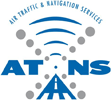The Air Traffic and Navigation Services (ATNS) Company of South Africa and the Swaziland Civil Aviation Authority (SWACAA) have signed a landmark Memorandum of Understanding (MoU), which is in line with the African aviation agenda, of harmonising the continental airspace, thereby improving the smoothness and cost-efficiency of the entire air traffic service chain.
The agreement was signed by Mr Thabani Mthiyane, ATNS CEO (Acting) and Mr Solomon Dube, the Director General of the Swaziland Civil Aviation, on Friday, 10 May 2013, in Manzini, Swaziland.
"ATNS is part of a larger collective that include other Air Traffic and Navigation Service Providers, Directorates of Civil Aviation and other airspace users within the African Continent, that is working tirelessly to bring down Africa’s accident rate of 16,8, to the global average, which stands at 4," said Mr Mthiyane, after the signing of the agreement.
Mr Mthiyane further stated that there is a need for a homogeneous airspace structure, for all airspace users. "The results are the attainment of African sky seamless airspace and more usage of new technologies for better efficiency in Communication, Navigation and Surveillance. This will enable the industry to achieve efficient and safe air navigation services."
The MoU entails the following: that it remains the responsibilities SWACAA to continue to provide the maintenance service of the ground equipment within the boundaries of Swaziland, which will support area control activities within the area of responsibility – delegated to ATNS.
SWACAA will also ensure that the necessary arrangements are in place to enable ATNS to provide Air Traffic Services within Matsapha Airport on behalf of the Kingdom of Swaziland. This is partly, as a result of the close proximity of the Maputo, Nelspruit and Matsapha Airport. A better and easier management of air traffic – in a safe and orderly manner, is a necessity in this sub-region.
In response, the SWACAA Director General of Civil Aviation, Mr Dube said: "This agreement states that ATNS should monitor aircraft which use our airspace. ATNS has equipment that could monitor aircraft as far as Mozambique and also the Indian Ocean. It is on this strength that we requested ATNS to provide such a service for us."
Both ATNS and SWACAA have – in concluding the agreement, indicated that there would be a project management team which will hold internal meetings as and when required to assign actions, solve any problems and propose solutions, define specific activities, review the project schedule and formulate detailed aviation-related plans.
Notwithstanding the provisions of the above-mentioned agreement, ATNS is committed to promoting the Southern African Development Community (SADC) Upper Airspace Control Centre and has already made a significant contribution to the regional cooperation with its other regional partners. The UACC will allow for the provision of air traffic services at regional level, based on the ICAO African Indian Ocean (AFI) Implementation Plan and CNS and ATM’s highest standards.

